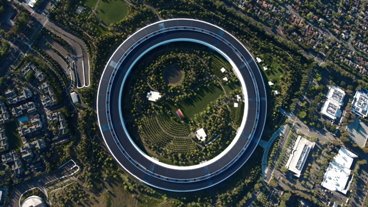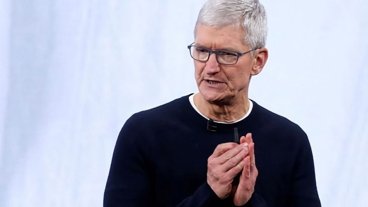Notes of interest from Apple's Q2 2011 conference call
Apple's iPhone sales in the second quarter of fiscal 2011 were an increase of 113 percent from a year ago. Mac sales also grew 28 percent to 3.76 million. Apple also sold 4.69 million iPads, a number that was below Wall Street expectations of about 6.2 million.
Participating in Wednesday's conference call were Apple Chief Operating Officer Tim Cook, and Chief Financial Officer Peter Oppenheimer.
Apple's regional business segments
Apple's revenue in America increased 87 percent in the second quarter of fiscal 2011.
Apple's greatest growth came from Asia, where profits increased by 151 percent.
Oppenheimer singled out the Asia Pacific market, where Mac sales grew 76 percent year over year.
"The growth in the Mac has been enormous in Asia," Cook said. "This is many multiples of the growth that that region is seeing for the market." IDC forecast is around 6 percent.
Japan also did well on the Mac for the quarter, and Cook said the U.S. had a "surprisingly" strong quarter for Mac sales.
Market share is less outside the U.S. in most places. Cook sees it as an opportunity for even more growth in the future.
"The momentum is still there. We seem to be the only guys that are focused on building innovative products in this space."
Several international countries are "extremely portable focused" with Macs, Cook said. He said the iMac has also performed well overseas though.
Apple's Mac business
Mac sales during the quarter were 3.76 million, a 28 percent increase year over year.
Greatest Mac sales ever for a March quarter.
IDC's most recent published estimate showed a 3 percent contraction in the overall PC market. March quarter is the 20th consecutive quarter that Apple has beaten the market.
New MacBook Pros got off to a strong start, "customer response has been excellent," Oppenheimer said.
iPad has created a "halo effect" for the Mac, Cook said, driving sales in the enterprise.
No evidence of share loss in the education business. Expect to see large year over year increase as we head into the back-to-school season.
Apple's iPhone business
iPhone sales grew an astounding 113 percent year over year, reaching 18.65 million for the quarter.
All-time quarterly record for iPhone sales.
Sales in America and Asia Pacific regions more than doubled year over year.
Strong growth in the enterprise segment. 88 percent of Fortune 500 are testing or deploying the iPhone. Examples: Cisco, Prudential, Boston Scientific, General Motors, Deloitte, Xerox.
Regarding the Japan earthquake, Cook said the economic impact "pales in comparison to the human impact."
Impact in Q2 was not major. Does not see a major impact in Q3, but Cook cautioned that the situation remains volatile, particularly with aftershocks and potential power outages.
Apple employees have been working around the clock on contingency plans. Preference has been to remain with long-term partners in Japan. "They have displayed an incredible resilience that I've personally never seen before," Cook said.
Cook: iPhone sales were "off the charts" in the U.S., with 155 percent year over year growth, thanks in part to Verizon. Also noted that AT&T did "extremely well."
"We continued to be on a tear in China. Greater China saw iPhone sales being up over three times, almost 250 percent," Cook said.
Cook said the $49 iPhone 3GS was "very popular, it did very well."
Cook on LTE networks: "The first generation of LTE chipsets force a lot of design compromises with the handset, and some of those we are just not willing to make. And so we are extremely happy with the iPhone 4 and the iPhone 3GS. Hitting 18.6 million units was something much larger than we thought we could do this quarter."
"We are constantly looking at where we should bring on incremental partners," Cook said. Apple brought on three large partners this quarter, particularly Verizon in the U.S.
iPhone focus has been on China. Overall sales in China was just less than $5 billion, or 10 percent of Apple. Cook said it's a "sea change."
The bulk of the emerging market focus has been in China. They're going to learn from that and then apply it to other countries.
Cook said Apple employees see Chief Executive Steve Jobs on a regular basis. He also said that Jobs wants to be back at work full-time as soon as he can be.
Cook said Samsung is a valuable partner in supplying components for devices.
"We felt the mobile communication division of Samsung ahd crossed the line, and after trying for some time to work out the issue, we decided we needed to rely on the courts."
Apple's iPad business
Apple sold 4.69 million iPads during its second fiscal quarter of 2011, as the company struggled to keep up with demand for the iPad 2.
Oppenheimer said the company is "thrilled" with momentum for the iPad.
"We're working hard to get it into the hands of customers as quickly as possible," Oppenheimer said of iPad 2.
"We sold every iPad 2 that we could make during the quarter, and would have liked to end the quarter with more channel inventory," Oppenheimer said.
Corporate demand for iPad is strong. 75 percent of Fortune 500 are testing or deploying iPad within their enterprises. Include companies: Xerox, AutoNation, ADP, Boston Scientific, Estee Lauder, Disney, Rite Aid.
Combining iPhone, iPad and iPod touch, Apple reached just under 189 million iOS devices sold.
On iPad 2 constraints: Cook called the demand "staggering." Said the company is "heavily backlogged" in the face of demand.
"We are shipping to an additional 13 countries next week, and we're planning to add even more countries through the quarter," Cook said. He's confident that the company will produce "a very large number of iPads" in the quarter.
"Demand has been staggering, and I'm not going to predict when supply and demand will come into balance," Cook said. "I can only be confident on supply side."
Cook: Product transitions are never simple. Apple drew the channel down on the first-generation iPad by 570k units during the quarter, and added, at the end of the quarter, 170k of the new iPad 2s, although most of it was in transit.
Sell-through was about 5 million for the quarter. "This has to be planned quite a ways in the future."
Won't say breakdown of iPad 2 vs. iPad 1 sales for the quarter due to competitive reasons. But Cook said he wishes Apple could have produced a lot more iPad 2s.
Cook: iPad 2 is "the mother of all backlogs."
Apple's iPod business
iPod sales were 9.02 million for the quarter, a 17 percent decline from the same period in 2010.
Total iPod sales were ahead of Apple's expectations. iPod touch accounts for more than half of all iPods sold.
Apple's share of MP3 players remain north of 70 percent. Still the top media player in most countries.
Revenue of almost $1.1 billion in iTunes. Best quarter ever.
Apple's retail business
Retail sales were up 32 percent in the second quarter of fiscal 2011, and in-store revenue from Mac sales was up 90 percent.
10th anniversary of Apple retail stores is on May 19.
In the coming days, Apple will host its 1 billionth retail visitor.
About half of Macs sold in stores were to customers who never owned a Mac before.
In March quarter, Apple stores set up more than 1 million products.
Revenue from retail stores was $3.19 billion, an increase of 90 percent.
323 stores in the quarter, with average revenue of $9.9 million, an increase of 67 percent.
International retail store volume exceeds average U.S. store volume.
Anticipate opening 40 new stores in fiscal 2011, nearly three-quarters outside of the U.S., including a fifth store in China.
Apple's next (Q3 2011) fiscal quarter
Apple provided guidance of about $23 billion in revenue and diluted earnings per share of $5.03 for its third fiscal quarter of 2011.
Projected gross margin of 41.4 percent. Expect the tax rate to be about 25 percent.
Guidance of $23 billion is a 7 percent sequential decline, uncharacteristic for Apple.
 AppleInsider Staff
AppleInsider Staff










 Mike Wuerthele
Mike Wuerthele

 Malcolm Owen
Malcolm Owen
 Chip Loder
Chip Loder

 William Gallagher
William Gallagher
 Christine McKee
Christine McKee
 Michael Stroup
Michael Stroup








67 Comments
Tim Cook just said apple's suppliers were able to implement contingency plans. No material impact to supply or cost currently from the disaster in Japan.
Apple provided guidance of about $23 billion in revenue and diluted earnings per share of $5.03 for its third fiscal quarter of 2011.
okey dokey
Tim Cook just said apple's suppliers were able to implement contingency plans. No material impact to supply or cost currently.
That would be an odd statement. So did he go on to explain missing the consensus estimates on iPad sales if supply wasn't an issue?
That would be an odd statement. So did he go on to explain missing the consensus estimates on iPad sales if supply wasn't an issue?
He didn't say there was no issue with supply, he just said that the disaster in Japan didn't impact the supply.
That would be an odd statement. So did he go on to explain missing the consensus estimates on iPad sales if supply wasn't an issue?
The break down of the number between models 1 and 2 would be the most telling metric. Model 2 was only introduced March 11th. The announcement was a month earlier I believe on the Feb 20th. That, in my opinion, would cause you to lose a month of 1 Qtr sales alone.